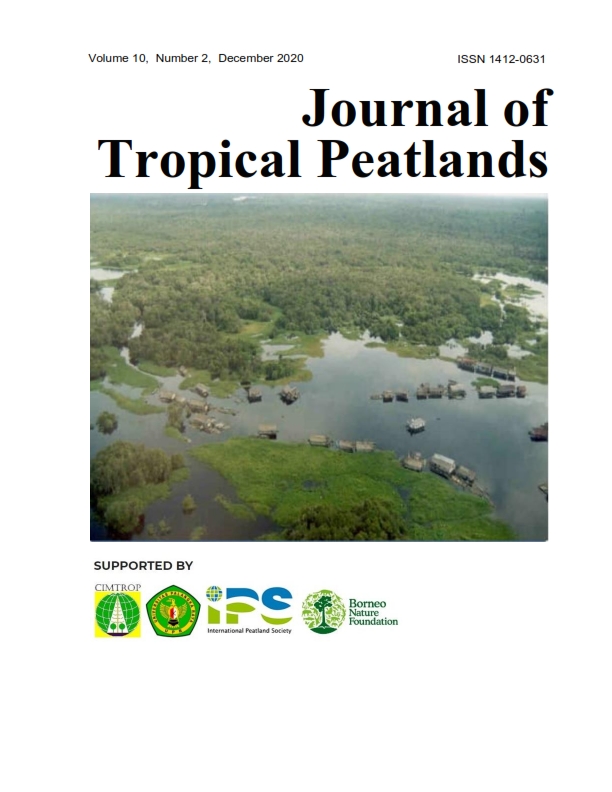Comparison of Arbuscular Mycorrhizal Spores Abundance Under Sengon (Falcataria moluccana (Miq.) Barneby & Grimes) Planted on Deep Peat and Mineral Soils
DOI:
https://doi.org/10.52850/jtpupr.v10i2.2062Keywords:
Arbuscular Mycorrhizal Fungi, Spores, Sengon, Peatlands, , Mineral soilAbstract
Mycorrhizae are known as soil fungi because of their habitat in the rooting area (rhizosphere). Nearly 97% of terrestrial plant species interact or symbiotic with mycorrhizae. Symbiosis is formed in the form of an exchange between nutrients and carbohydrates and helps plants absorb P. elements. In Kalimantan, sengon often used as industrial material because it is fast-growing species and widely cultivated by the community. Sengon is a common species planted in mineral soils; however, due to the rising demand of sengon timber, it has been planted on peatlands. This study aims to compare the abundance of arbuscular mycorrhizal spores and identify the morphology of arbuscular mycorrhizal spores associated with Sengon planted on peatlands and mineral soils. This study used a wet sieving method and root staining from the modification of Vierherling et al. 1996 and calculation of root mycorrhizal colonization with gridline techniques. The research used the normality test of data distribution and the T test (Independent sample T test) to determine trends and comparison of differences in the abundance of FMA spores. The study results showed a significant difference in the abundance of AMF in the form of colonization by calculating the percentage of AMF colonization in the sengon root in mineral soils and peatlands of 23.56% 41.67%, respectively. The spore density on mineral soils and peatlands were 18.05 / 50gr and 1.09 / 50gr, respectively. Identification results showed that there were four genera found in peat soil locations, namely the genus Glomus, Gigaspora, Scutellospora, and Acaulospora, while in the mineral soil were found three generas namely genus Glomus, Scutellospora, and Acaulospora. Out of the four generas, the most abundant in both soil types was Glomus.
Downloads








